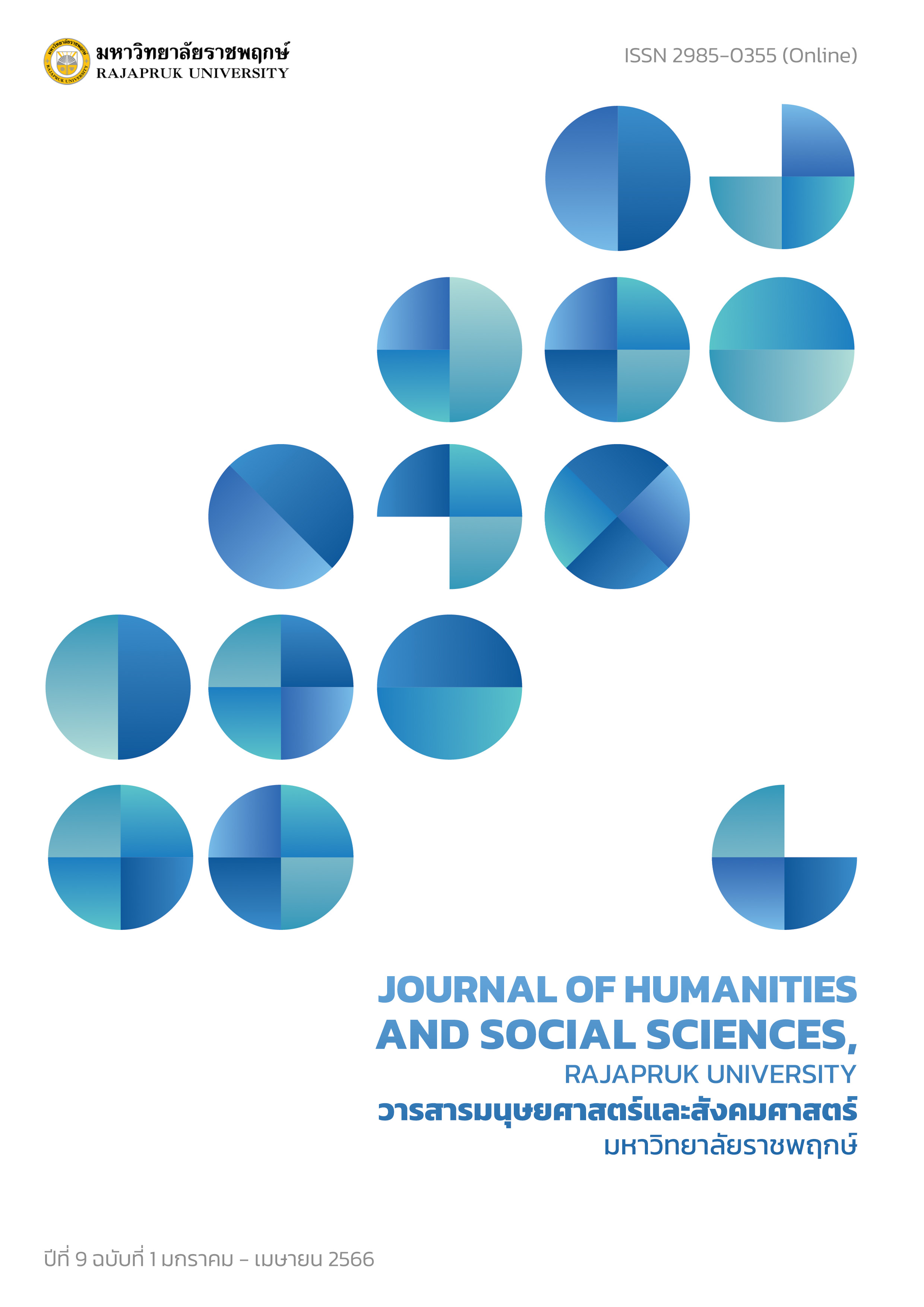Transportation System Efficiency Evaluation through the Main Logistics Activities Process: A Case Study of ABC Company
Main Article Content
Abstract
The objectives of this research were: 1) to create indicators to assess the efficiency of transport systems through the main logistics activities process, and 2) to evaluate the efficiency of the transport systems using the indicators on the main logistics activities, a case study of ABC transport company. The researcher reviewed the related literature on the main logistics activities for transport and accuracy principles and then developed the indicators before taking to the in-depth interview. The assessment forms of indicators were delivered to a sample consisting of 10 participants who were related to the company’s transport activities in order to examine the accuracy of the developed indicators. After that, the completed efficiency assessment forms were used to evaluate the efficiency of the company’s transport system (a case study).
The research results show that the appropriate indicators in evaluating the efficiency of the transport system included the three main activities: communication, unloading and packing, and transporting. Each activity consisted of 5 dimensions (15 indicators): 1) accuracy, 2) quality, 3) place, 4) time, and 5) cost. The overall evaluation of the efficiency of ABC company’s transport system averaged 4.72. Although the company’s overall evaluation was at an excellent level, the average duration indicator in sending orders within the organization was little at 2.00. Therefore, the company should put more emphasis on developing a system for sending orders in the organization to be faster in order to reduce the impact and prevent problems that might occur by using communication technology: a database system or mailing system within the organization.
Article Details
References
กรมการค้าต่างประเทศ. (2563). การค้าชายแดนของไทย. กองความร่วมมือการค้าและการลงทุน. ค้นเมื่อวันที่ 13 เมษายน 2564, จาก https://www.dft.go.th/Portals/3/ชายแดนผ่านแดน เดือน ม.ค-ส.ค.pdf
กรมส่งเสริมอุตสาหกรรม. (2562). การประเมินตัวชึ้วัดประสิทธิภาพโลจิสติกสภาคอุตสาหกรรม Industrial Logistic Performance Index: ILIP. กองโลจิสติกส์กระทรวงอุตสาหกรรม.
จุฑามาศ เหล่าพิทักษ์ และ กวีพล สว่างแพ้ว. (2564). การศึกษาการวัดประสิทธิภาพการให้บริการในการขนส่ง. คณะโลจิสติกส์ มหาวิทยาลัยบูรพา.
ไชยยศ ไชยมั่นคง และ มยุขพันธุ์ ไชยมั่นคง. (2553). กลยุทธ์โลจิสติกส์และซัพพลายเชน: เพื่อแข่งขันในตลาดโลก = Logistics and supply chain strategy: competing in the global market. นนทบุรี: ซี.วาย.ซิซเทิม พริ้นติ้ง.
น้องส้ม โพธิ์ประเสริฐ และ ชิตพงษ์ อัยสานนท์. (2561). การบริหารจัดการผู้ให้บริการโลจิสติกส์สำหรับผู้ประกอบการส่งออกอาหารในประเทศไทย. วารสารวิทยาลัยโลจิสติกส์และซัพพลายเชน, 4(2): 118-128.
มะนิกา ละมณี ศิรภัสสร แก่นสิงห์ และ โรจนี หอมชาลี. (2563). การพัฒนาตัวชี้วัดประสิทธิภาพด้านโลจิสติกส์สาหรับผู้ประกอบการขนส่ง. Suranaree J. Soc. Sci., 14(2): 50-72.
รุธิร์ พนมยงค์. (2553). การปรับปรุงการเข้าถึงของสินค้าไทยสู่ตลาดญี่ปุ่น ด้วยการบูรณาการกับห่วงโซ่อุปทานของญี่ปุ่น. สำนักกองทุนสนับสนุนการวิจัย.
วัชระ วัธนารวี และ ภูมิพัฒน์ มิ่งมาลัยรักษ์. (2561). การวิเคราะห์องค์ประกอบเชิงยืนยันประสิทธิภาพการจัดการโลจิสติกส์ของธุรกิจการค้าข้ามแดนเชียงราย. สุทธิปริทัศน์, 33(105): 26-37.
Donath B. (2002). The IOMA Handbook of Logistics and Inventory Management. Wiley John Wiley & Sons.


